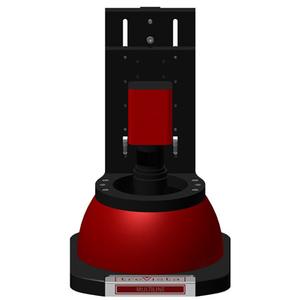The system allows you to control rotating or translating components and inspect complex surfaces to ensure 100% process reliability with image quality unmatched to date
Combined with suitable handling systems, this surface control system achieves high component throughput and unmatched flexibility.
The operation of CVS trevista Multiline is based on "shape from shading" technology. It uses a special lighting approach to represent in few fractions of a second the characteristics of the surface to be controlled on different images of the result. During this process, the information is separated into two channels: the brightness and the topography of the part to be checked which are evaluated separately. This method makes it possible to carry out a very stable, reliable and objective evaluation of the surface characteristics to the nearest ?m, which reduces the pseudo-scrap to a minimum.
The technical specification of CVS trevista Multiline is based on the fact that the system works with a matrix camera on which certain rows of the sensor are read. In this way, the objects are acquired in several rows. Depending on the application and the camera used, it is thus possible to achieve maximum control speeds of 300 mm / s.
Since the lighting and the camera are interconnected on this system in a fixed manner in the head of a sensor, the complicated harmonization between the illumination and the camera is superfluous.
The standardized structure allows a simple integration close to production as well as a post-installation without problems in existing control systems. For image analysis, the user can choose between the Common Vision Blox (CVB) software environments of STEMMER IMAGING and Sherlock of Teledyne DALSA.
Combined with suitable handling systems, this surface control system achieves high component throughput and unmatched flexibility.
The operation of CVS trevista Multiline is based on "shape from shading" technology. It uses a special lighting approach to represent in few fractions of a second the characteristics of the surface to be controlled on different images of the result. During this process, the information is separated into two channels: the brightness and the topography of the part to be checked which are evaluated separately. This method makes it possible to carry out a very stable, reliable and objective evaluation of the surface characteristics to the nearest ?m, which reduces the pseudo-scrap to a minimum.
The technical specification of CVS trevista Multiline is based on the fact that the system works with a matrix camera on which certain rows of the sensor are read. In this way, the objects are acquired in several rows. Depending on the application and the camera used, it is thus possible to achieve maximum control speeds of 300 mm / s.
Since the lighting and the camera are interconnected on this system in a fixed manner in the head of a sensor, the complicated harmonization between the illumination and the camera is superfluous.
The standardized structure allows a simple integration close to production as well as a post-installation without problems in existing control systems. For image analysis, the user can choose between the Common Vision Blox (CVB) software environments of STEMMER IMAGING and Sherlock of Teledyne DALSA.
